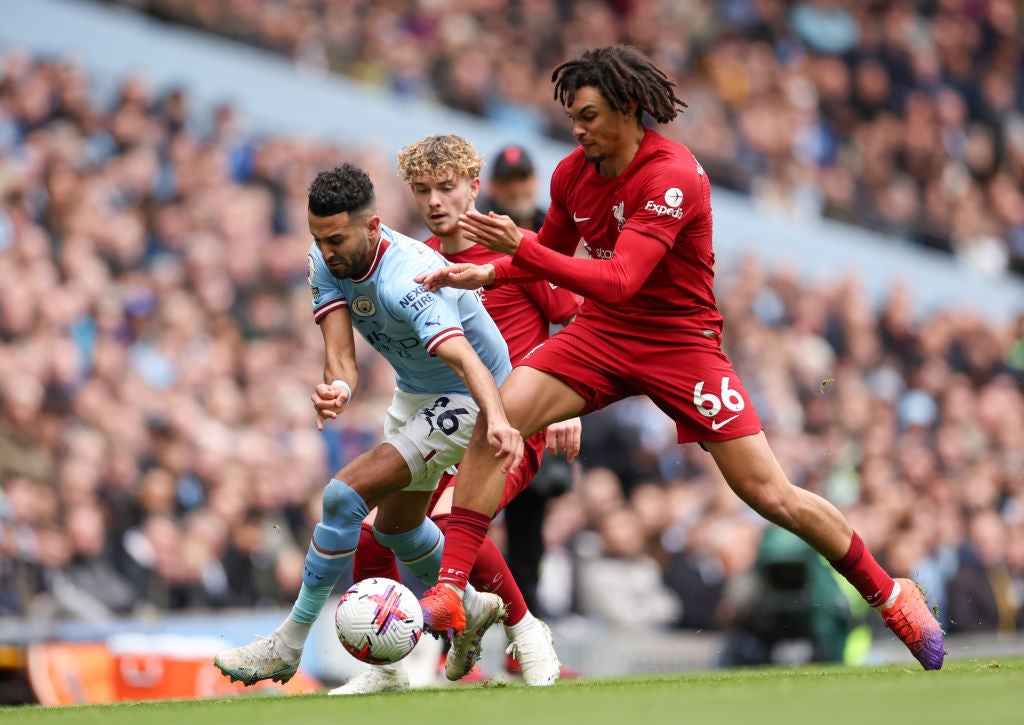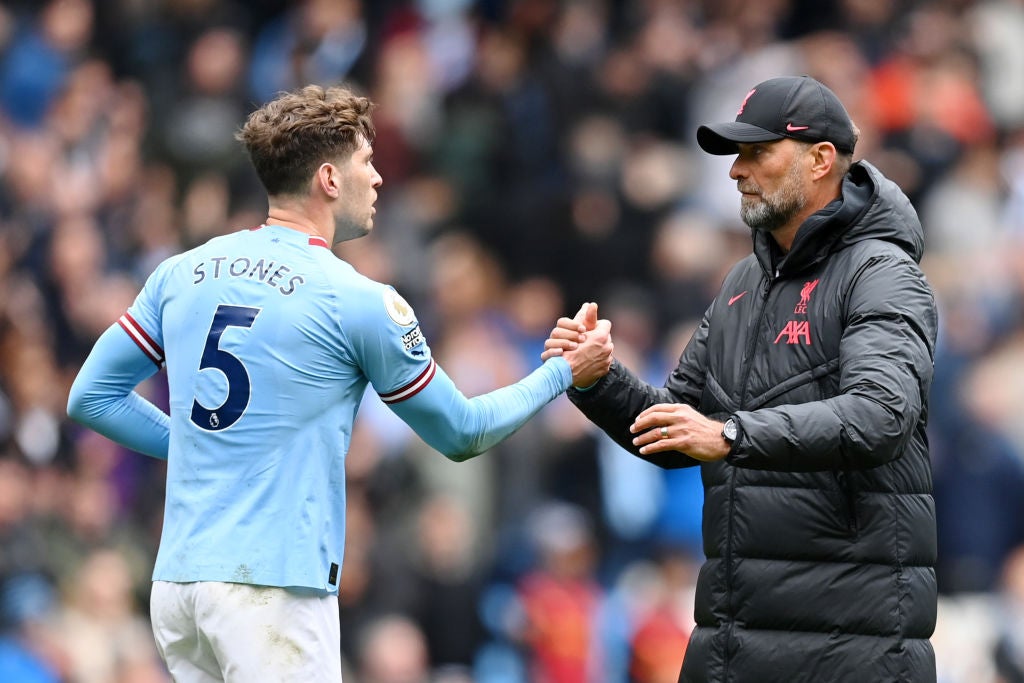
For the second time this season, Manchester City were behind after Trent Alexander-Arnold took aim from long range. He broke the deadlock in the Community Shield with a shot from 18 yards. His role in the opener at the Etihad Stadium was more indirect, but he lofted a pass from his own half over Pep Guardiola’s defence before Diogo Jota set up Mohamed Salah to score.
The great assist machine played a part in other goals, too. He wasn’t close enough to Jack Grealish when he crossed for Julian Alvarez to equalise. He blocked the Argentinian’s shot, but prodded it straight to Ilkay Gundogan, who scored City’s third.
He was isolated against two City players, meaning Kevin de Bruyne was free to complete a one-two by sending Grealish in to add the fourth, but the £100 million man ran away from Alexander-Arnold. He did all afternoon.
In its own way, it was the story of a season. Alexander-Arnold is an emblem of Liverpool’s decline, the strength turned into a weakness, the great original now unfavourably compared with conventional right-backs.
As is often the case, there can be a simplistic element to criticisms, scapegoating the individual without addressing the systemic issues. Certainly, Alexander-Arnold’s body shape and positioning can be questioned; there are others who are better at defending the far post or who get tighter to wingers.
Equally, the breakdown of Liverpool’s midfield means full-backs who are upfield are more liable to be caught out, as Alexander-Arnold was for City’s second goal. For years, he was afforded protection by the man immediately ahead of him on the right of a midfield trio, whether Jordan Henderson, James Milner or Gini Wijnaldum. Some of Alexander-Arnold’s problems have occurred when Harvey Elliott has been his supposed shield. He had gone off and the substitute Alex Oxlade-Chamberlain was perhaps culpable when Alexander-Arnold was left on his own for the fourth goal, but too often the teenager has left him exposed.
On Saturday, Jurgen Klopp did: Liverpool’s 4-2-3-1 shape meant their full-backs were isolated in a way they should not be in his trademark 4-3-3, and against wingers of the calibre of Grealish and Riyad Mahrez and a team with the ability in possession to switch play rapidly to the flanks.

For Alexander-Arnold, after his now familiar torment by Vinicius Junior, a trial by the tricky Grealish was failed; perhaps the quick, direct, left-footed Brazilian has been joined on the list of the Merseysider’s nemeses by a seeming antithesis. A week that includes a meeting with Gabriel Martinelli, whose fan club has a particularly prominent member in Klopp, could promise further trouble.
City’s evisceration of Liverpool may have had an illogical element; not in terms of the scoreline or the level of domination, but with the fortunes of the full-backs. The team with no proper full-backs beat the side who, for the last few years, had arguably the best partnership in world football. The right-back who might have given Liverpool more security, certainly after Alexander-Arnold’s constructive skills helped put them ahead, languished on the bench: the City bench. Kyle Walker remains arguably the best in the business at one-on-one defending.
Instead, there was a tale of the false twos, the pair of hybrid footballers. Alexander-Arnold is the playmaker right-back, John Stones the converted centre-back who now plays two other positions in one: part right-back, part holding midfielder. “Always I thought when he arrived he had the quality to play there,” said Guardiola, who sees footballers as projects ripe for reinvention.

The ‘Barnsley Beckenbauer’ is now the Barnsley Lahm; it is a surprise success and if Guardiola is vindicated in his gamble of letting Joao Cancelo leave, it will be because Stones has become his improbable replacement to compensate for the imbalance in the City squad. They have five who are centre-backs by trade and one senior full-back.
Tony Pulis often constructed back fours from central defenders; maybe Guardiola is his unlikely disciple. His teams have tended to be staffed by players with midfielders’ skillsets. Alexander-Arnold spent his upbringing there; some think his future lies there, too. In the meantime, there have been times, often explained by managing his workload, when the 37-year-old midfielder Milner has been preferred at right-back. They are indictments and there is a case for arguing the best defensive performance at right-back for Liverpool this season came against City: but by Milner in October,
If moving Alexander-Arnold further forward would represent a fundamental shift to Klopp’s blueprint - he had been preparing for the Liverpudlian early in his reign, before he even debuted - and create a vacancy for a right-back when the narrowness of his formation renders the full-backs’ jobs still tougher.
So the midfield makeover has to incorporate a need for someone who can aid Alexander-Arnold and slot in ahead of him. Jude Bellingham, Mason Mount and Conor Gallagher are compelling candidates and represent exciting summer targets, with their evident quality accompanied by energy and positional nous. As Henderson gets older, it is harder for him to act as Alexander-Arnold’s bodyguard.
But if it is unrealistic to expect Alexander-Arnold to become Anfield’s answer to Walker, the most difficult season of his career has suggested his defending has deteriorated. Because there was a recent revelation of a right-back on show on Saturday. And it was John Stones.







